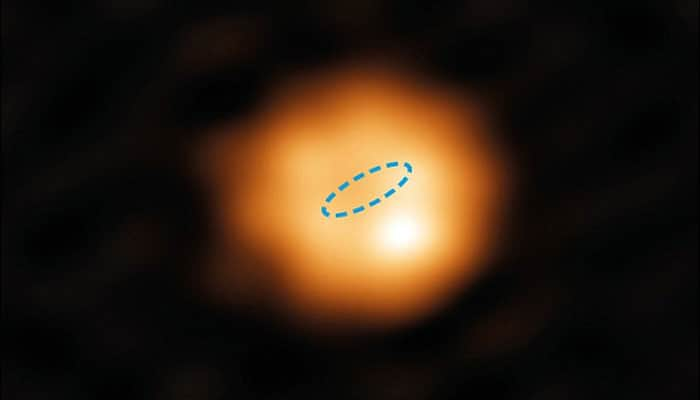New Delhi: A giant, red, ageing star has just provided scientists with a glimpse of how the Sun will look like in the future.
A team of astronomers from Sweden have for the first time observed the clearest and sharpest view of the dying star, which has the same mass as the sun, demonstrating a glimpse of the Sun's future.
Sun-like stars evolve over time-scales of many billion years. When they reach old age, they puff up and become bigger, cooler and are more prone to lose mass in the form of stellar winds.
When these stars reach the red giant stage, elements like carbon and nitrogen are released into space, ready to be used in subsequent generations of new stars.
Images captured using the Atacama Large Millimeter/submillimeter Array (ALMA) telescopes showed that the star W Hydrae, which is at a distance of 320 light years in the constellation of Hydra, is a giant with a diameter twice the size of Earth's orbit around the Sun.

"It's humbling to look at our image of W Hydrae and see its size compared to the orbit of the Earth. We are born from material created in stars like this, so for us it's exciting to have the challenge of understanding something which tells us both about our origins and our future," said Elvire De Beck, astronomer at the Chalmers University of Technology in Sweden.
Hydrae is an example of an AGB (asymptotic giant branch) star. Such stars are cool, bright, old and lose mass via stellar winds.
The name derives from their position on the famous Hertzsprung-Russell diagram, which classifies stars according to their brightness and temperature.
Further, the observations which revealed the presence of an unexpectedly compact and bright spot provides evidence that the star has surprisingly hot gas in a layer above the star's surface – a chromosphere, the study said.
"Our measurements of the bright spot suggest there are powerful shock waves in the star's atmosphere that reach higher temperatures than are predicted by current theoretical models for AGB stars," explained Theo Khouri, astronomer at the Chalmers.
However, the astronomers also hinted at an alternative possibility that the star was undergoing a giant flare when the observations were made.
(With IANS inputs)
















